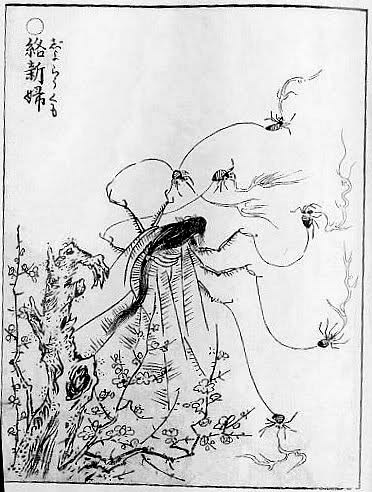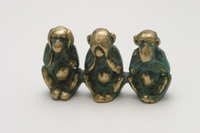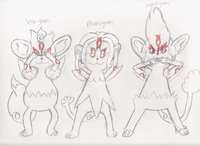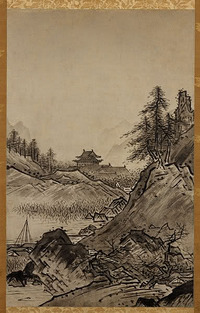Part 7: Mythology Dissection 1

Spider Queen, Tsuta Ruins, and the Hanagami
Welcome to another edition of "Silver Falcon’s Okami Mythology Dissections!” TM In today’s Dissection, I’m going to talk about our latest Brush Gods, and our first boss: Spider Queen.
Spider Queen is based on the Jorogumo. Jorogumo is a prominent character in Japanese folklore. There are a lot of stories about her. Jorogumo is a spider that can transform herself into a beautiful and seductive woman. She lures men with her beauty and charm, then ensnares them in her web and devours them! In some legends, she entices unsuspecting men by playing a biwa lute.

The Jorogumo
Jorogumo can either mean "binding lady" or “whore spider,” depending on how it's written. Note that in official soundtrack, the Spider Queen is called Geisha Spider. Tax Refund has kindly provided more information about the Geisha and their common portrayal as prostitutes:
Tax Refund posted:
I learned recently that this isn't quite right. Geishas were hired companions, who were skilled at many different forms of art like dancing, music, the tea ceremony, etc. But when you hired a geisha, sex was never included. Now, many geisha did end up taking lovers from among their clients, but that was by their own choice. So it's inaccurate to call them prostitutes, really. More like an "escort service", or what an escort service would be if it was actually a real "escort service" (as opposed to a thinly-disguised prostitution ring).
The reason geishas are often associated with prostitution is easy to understand, though. Many prostitutes did end up wearing geisha makeup and calling themselves geishas, trying to attract a higher-class clientele. And according to one source (who seems quite knowledgeable to me, though I'm far from an expert on the subject), American GIs occupying Japan after World War II called all the prostitutes, bar hostesses, etc. that they interacted with "geisha girls", which may be another reason the "geisha = prostitute" concept has persisted in the West.
Now, given the description you gave of how Jorogumo appears in Japanese folklore, the "prostitute" label may well have applied to her. (Though the "black widow" label, the woman who seduces men and then kills them, is probably more accurate). But according to that book and other sources (which I've sadly forgotten or I'd provide links to them as well), she wouldn't have been considered a "true" geisha, because "true" geishas never sold sex; if they took lovers, it was by their own choice.
P.S. Also, the sources I've seen mostly discuss modern Japanese culture. If anyone knows a lot about Japanese history, and knows if geishas were viewed differently way back when (i.e., if there was a period in Japanese history where you couldn't draw any meaningful distinction between "geisha" and "prostitute"), I'd be interested to learn about it.
There are a lot of good stories about the Jorogumo, many of them delightfully creepy! I’ll go over a couple of them.
The legends say that when a spider reaches 400 years of age, she gains the power to transform into a lovely and beguiling woman. She searches for unsuspecting nobles to marry her. The Jorogumo may also appear as a pregnant woman, but her engorged belly actually contains a spider's egg sack!
According to local folklore, a Jorogumo haunted the Joren Waterfall. Legend has it that one day, a man was dangling his feet in the water to cool off when he was ensnared by a spiders webbing. He tied the webbing to a tree trunk and was thus able to escape. The nearby villagers thereafter avoided the waterfall, until the day when an unsuspecting woodsman stopped by the Jorogumo's pool for a rest. As he was leaving, he tripped and dropped his axe into the water. Just as he was about to dive in and retrieve it, a beautiful woman appeared, holding his axe. She returned it to the woodsman after making him promise to tell no one about her. That night, the woodsman got drunk and boasted to his friends about his encounter with the mysterious woman. Afterwards, he fell into a deep sleep, never to awaken again.
I’m not sure what the closest Western analogue to the Jorogumo would be. Possibly a succubus or a siren.
Brush God: Hanagami

Hana means flower.
The Gods of Flora and keepers of Greensprout:
Sakigami- Bloom. Saku means “to bloom.”
Hasugami- Lily Pad. A hasu is a lotus flower.
Tsutagami- Vine. Tsuta means “to spread”
The Monkey- Inventor, motivator, improviser, quick-witted, inquisitive, flexible, innovative, problem solver, self-assured, sociable, artistic, polite, dignified, competitive, objective, factual, intellectual. Can be egotistical, vain, arrogant, selfish, reckless, snobbish, deceptive, manipulative, cunning, jealous, suspicious.
The monkey crossed the river with the help of the ram and rooster. The three animals rode across together on a raft. The monkey helped clear away the reeds in the way of the raft as the three animals rode across. He ranked 9th.
This trio of Brush Gods acts as a single unit. They could also be a reference to the three wise monkeys, a Japanese pictorial maxim embodying the proverb "See no evil, hear no evil, speak no evil." In Japan, this proverb is regarded as The Golden Rule.


Three Wise Monkeys statues
Each of them carries an instrument. Sakigami bears a sho, a handheld mouth organ. Hasugami plays a shakuhachi, a type of flute made of bamboo. Tsutagami's instrument, is of course, the cymbals.

Searigami, Pourugami, and Sageagami
Miscellany
The Hitoshio Spring- Issun mentions the name is pretentious. Hitoshio means much, still, all the more, or especially. So, "Especial Spring?" I guess that is a little pretentious.
The Tsuta Ruins are called the Tsutamaki Iseki in Japanese, meaning “winding ivy ruins.”
And as an extra miscellaneous fact, since people have been talking a bit about the art style in this game, I’ll go into it in a bit more detail. Okami's visual style is based on Sumi-e: an east Asian style of painting with ink and watercolors. Traditionally, only black ink is used, in varying concentrations to achieve gradients in shading.


Kerrrrrrr posted:
I originally used the rosaries primarily even after I got multiple of the 3rd weapon type, but eventually my arm got tired of all the damn wiimote shaking.
The timing is certainly finicky on the 3rd weapon type, and sometimes it would just straight up not register my motions, but man the crazy damage on them and the awesome animations for them are totally worth it. It's so satisfying when they do finally hit and just one-shot some poor imp. And they let my arm rest.
Can't wait til you get one!
I'll be sure to give them a fair shake!
